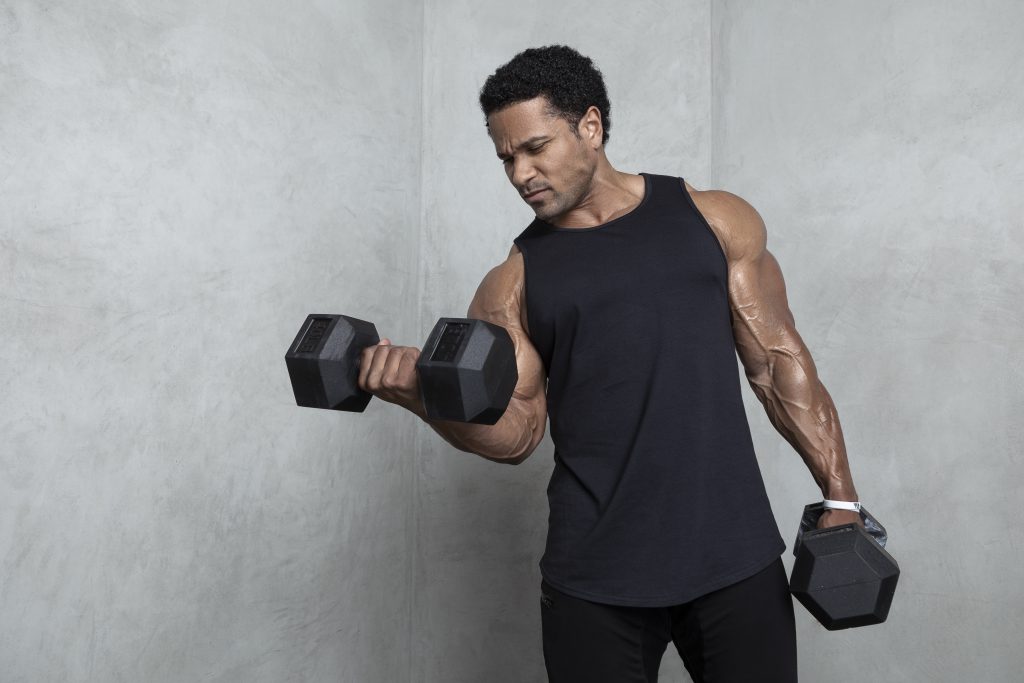
If strong is the new sexy, it’s no wonder more people than ever want to start lifting weights. Instagram hashtags such as “fitspiration” (fitness inspiration) and #gym contain millions of posts, typically of flexed muscles, inspirational quotes and exercise advice.
While weight training can be a great way to lose weight and build muscle, it can be confusing and even intimidating knowing where to get started – especially when there’s so much contradictory fitness advice available online. Another problem is that most of the fitness advice you do find online will tell you there are certain “must do” exercises you need to include in your fitness regime – or else you won’t see progress.
These are often barbell exercises, such as barbell squats (balancing a barbell on the upper back while lowering your hips to around 90 degrees before pushing back up), deadlifts (lifting a barbell off the ground to hip-level) or hip thrusts (resting the upper back on a bench or flat object and using the hips to push a barbell upwards).
But are these exercises really essential? Well, the answer is a bit more nuanced than a simple yes or no.
While barbell exercises allow you to load up heavy weights, they require you to perform very specific movements patterns. Whether it’s upper body exercises such as the bench press (lying on a bench and pushing a barbell skyward) or overhead press (standing or kneeling and pushing the barbell from chest level to above the head), or lower body exercises such as squats or deadlifts, barbell exercises are bilateral exercises – meaning two limbs work together at the same time to lift the weight.
But barbell exercises might not actually work for everyone. Because of the nature of the barbell, it means that a person’s individual anatomy may actually make these movements feel uncomfortable depending on a number of different factors, such as limb lengths or past injuries. This means barbell movements could actually place some people at greater risk of injury if performed incorrectly.
For example, people with long legs may find barbell squats more challenging due to the extra range of motion that’s needed to move the barbell. Muscle imbalances (which can change natural movement patterns and range of motion) may also cause shoulder pain or even injury during overhead presses or bench presses with a barbell.
Skip the barbell
Dumbbell and kettlebell variations (smaller, hand-held weights) can be much more forgiving, particularly for upper body pressing exercises – such as the overhead press – and single leg exercises. This is because dumbbell and kettlebell exercises are often unilateral exercises, which means each limb moves independently to perform the exercise. This means we can adjust an exercise to move in ways that reflects our unique anatomies.
While there’s still much debate in the scientific community about whether bilateral or unilateral exercises are better, some evidence indicates that the unique way unilateral exercises recruit muscles during an exercise can actually help us lift more weight in the long run. This may be due to the bilateral deficit, which is a phenomenon where the force produced using two limbs at once is less than the combined force produced when they are used independently.
But while unilateral exercise are a great way to build balance and strength, bilateral exercise are still useful if you’re short on time. They can also be adjusted to make them safer and more comfortable – such as using a trap bar (a big, hexagonal barbell that you step into) for deadlifts, as this places less load on the lower back and may be particularly useful for people with back issues or longer legs.
If your goals are to build muscle and get stronger, the most important thing you need to do is place the muscle under load (weight) and progressively do more over time. This can take the form of lifting heavier weights, increasing the number of sets and repetitions performed or adjusting rest times to do more work in less time. This is known as “progressive overload”.
But progressive overload can be done with any weight lifting exercise – not just barbell exercises. If we can remove our attachment to a particular exercise and view them just as tools to get a job done, this opens new possibilities to make exercise more varied, individualised, and perhaps even more enjoyable – which might also mean we’re more likely to stick to it in the long term.
It could even be argued that any exercise you enjoy and do consistently is the best form of exercise for you. And consistency, not what exercises we do, is the most important factor in achieving the long-term benefits of exercise.
Weight training has many benefits – such as helping us lose weight and build muscle. It can even reduce symptoms of chronic conditions like heart disease and diabetes, and lower risk of death by 15% from all causes. So it’s important to remember that you can achieve these benefits with any weight-based exercises – whether you use a barbell or not.
This article was originally posted on Barbell exercises aren’t essential for getting fit – here’s what you can do instead